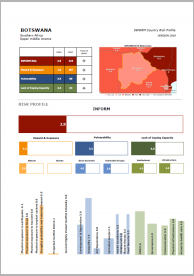The most common natural hazards in Botswana are floods and droughts, affecting on average more than 5 million and 845 million people annually, respectively (UNDRR and CIMA, 2019).
Botswana
The following is a list of all conten labeled as "Botswana"
-
Profile
-
Document

Lorem Ipsum is simply dummy text of the printing and typesetting industry. Lorem Ipsum has been the industry's standard dummy text ever since the 1500s, when an unknown printer took a galley of type and scrambled it to make a type specimen book. It has survived not only five centuries, but also the leap into electronic typesetting, remaining essentially unchanged.
-
-
Document
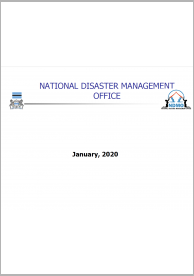
Botswana presentation in the Strengthening Disaster Risk Reduction, Coordination, Planning and Policy Advisory Capacity of SADC Project Inception Workshop, held in Johannesburg, South Africa, 20-24 January 2020.
-
Document
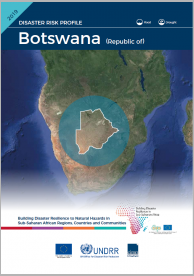
The Country Risk Profiles provide a comprehensive view of hazard, risk and uncertainties for floods and droughts in a changing climate, with projections for the period 2050-2100. The risk assessment considers a large number of possible scenarios, their likelihood, and associated impacts.
-
-
Document
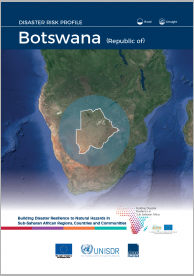
This country risk profile for Botswana provides a comprehensive view of hazard, risk and uncertainties for floods and droughts in a changing climate, with projections for the period 2050-2100.
-
Document

This report analyses some of the southern african countries readiness to humanitarian impacts related to their macro-economic conditions, the regional seasonal rainfall forecast, the food, livelihood and nutrition security and the conflict in Democratic Republic of Congo.
-
Document
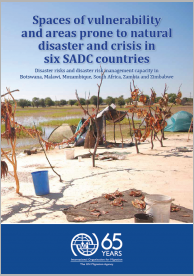
In light of national, cross-border, transboundary and regional hazards of various type in Southern Africa, a desk review was undertaken by the International Organization for Migration (IOM) in order to enhance the understanding of disaster risk and spaces of vulnerability (i.e.
-
Document

This document describes the main results of the Regional Inter-Agency Standing Committee (RIASCO) Action Plan for the El Niño-Induced Drought in Southern Africa 2016/2017.
It includes an analysis by sector, funding, lessons learnt and recommendations and a chapter for developmental risk management solutions.
